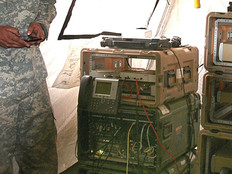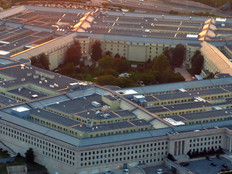Pentagon's Streamlined IT Service Provider Boosts Efficiency
It’s been a long time coming, but the IT bureaucracy inside the Pentagon is getting streamlined and the new structure is producing positive results for the Defense Department.
Last month, the organization known as the Joint Service Provider, which manages all of the IT and cybersecurity defense services inside the DOD, declared full operational capability and became a subcomponent of the Defense Information Systems Agency.
DISA, which provides IT and secure communications services across the DOD and military service branches, now has greater mission and budget authority, Federal News Radio reports. Lt. Gen. Alan Lynn, DISA’s director, is now in charge of the funding and personnel that offer most of the IT services for the Pentagon and other DOD offices inside the National Capital Region.
By consolidating IT functions, the JSP helps the DOD save money and improve efficiency. JSP has also consolidated contracts. In some cases, the savings have been plowed back into DISA and used to deploy new services such as Wi-Fi.
“It centralizes the control and the budgeting in a way that optimizes unity of effort and unity of command throughout the enterprise to support the Department of Defense in the Pentagon and the NCR in a way that heretofore had never been realized,” Maj. Gen. Brian Dravis, JSP’s director, tells Federal News Radio, regarding the administrative changes for JSP.
SIGN UP: Get more news from the FedTech newsletter in your inbox every two weeks!
The Need to Consolidate the DOD’s IT Services
By DISA’s own admission, IT services in the Pentagon “have historically been provided by multiple organizations with duplicative capabilities,” and JSP was established in May 2015 to make IT more efficient for the DOD.
The Army’s Information Technology Agency was merged with the Washington Headquarters Services Enterprise Information Technology Services Directorate (EITSD) to form the backbone of JSP, which also includes staff from the Joint Chiefs of Staff.
As DISA noted in July, the consolidation resulted in a savings of $30.7 million in fiscal year 2016, and will result in an estimated savings of $354.3 million in between fiscal years 2017 and 2021. Dravis tells Federal News Radio that the merger of the three organizations wound up cutting collective spending and manpower requirements by about one-third.
“There were elements within those seed organizations that absolutely had to be deduplicated, and we did that,” Dravis says, adding that almost all of the staffing reductions happened through attrition. About 440 civilian and military staff who had worked for ITA, EITSD or the Joint Staff now work for the JSP, according to Federal News Radio.
“But very candidly, not everybody in the building bought in to the directed consolidation. There’s always going to be resistance to change, and you’ve got to basically win them over,” Dravis tells Federal News Radio. “We had to get people to understand that this consolidation was going to happen one way or another, and I used the phrase at times with folks, ‘You know, you need to let go of the Titanic. This change is going to happen. If you can’t adapt, we wish you the best, but you’ve got to adapt to be part of this organization.’ The people we have here now have all done that.”
The JSP also inherited 499 separate contracts, which agency leaders found unmanageable, and JSP has cut that figure down to about 200, a number that will likely drop further now that the JSP is a component of DISA.
Some of the savings, Federal News Radio reports, have been reinvested and used to provision new services, like a Wi-Fi network that provides public internet access to Pentagon visitors as well as secure access to DOD’s unclassified network for Pentagon employees.
Dravis says the network is one of the JSP’s biggest successes so far and was pushed across the finish line largely by former DOD CIO Terry Halvorsen.
“One of the reasons we got very aggressive about it is because of our observations about where industry is going,” he said. “There are clear and unambiguous trends that are occurring to shift to a mobile workforce; a younger generation of workers coming into the department who are accustomed to and frankly expect to be able to work in a mobile environment.”
What’s Ahead for the Pentagon’s IT?
It’s often expensive and time-consuming to deploy new network infrastructure inside the Pentagon, according to Dravis, which is why the JSP is pushing the DOD to move to a hybrid network model that mixes wired and wireless connections. Over time, that will save the DOD money, he argues, since the department won’t be spending money operating and maintaining a solely wired infrastructure.
Still, some extra costs are unavoidable right now, and while DISA and the JSP have operational control of the Army’s IT infrastructure and end-user devices, similar agreements haven’t been made with other service branches.
However, as Federal News Radio reports, the JSP “has begun to tag and collect data on each item of information technology in the building so that senior leaders have a centralized and concrete idea of how many and what kind of network-connected devices are inside the Pentagon — something that’s not been tracked before.”
That has been a “bit of an onerous task,” Dravis says, and the process is ongoing and something DISA takes “very, very seriously.”
“Regrettably, I don’t think we had that absolute demand for accountability in the department before 2015. I’m not criticizing anybody,” Dravis tells Federal News Radio. “I just think it wasn’t where it probably should have been. I think a lot of people acknowledge that.”









